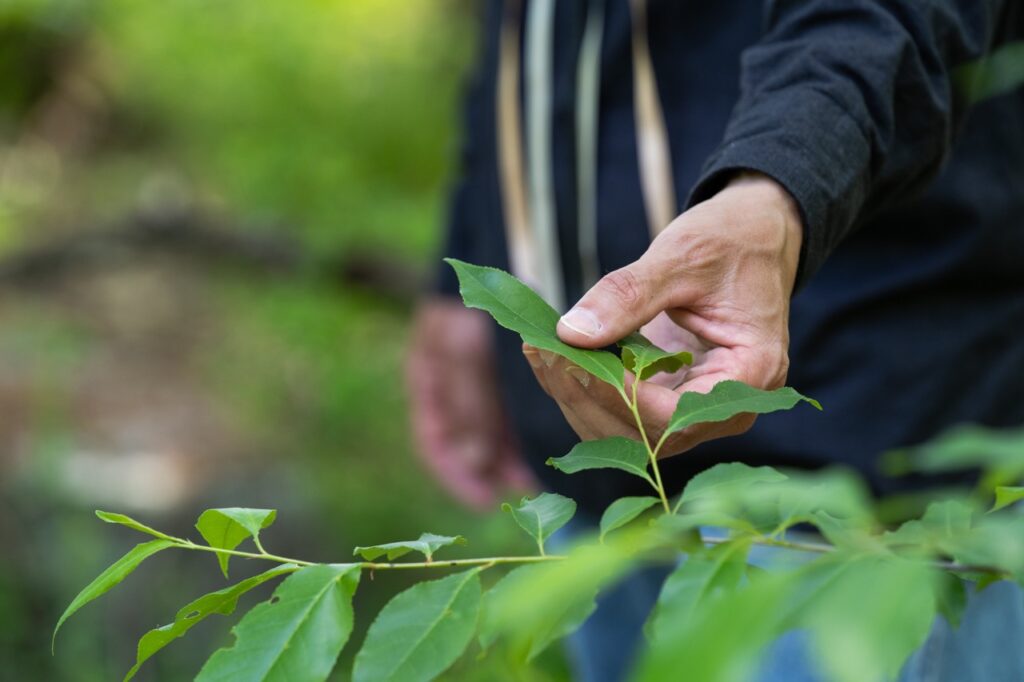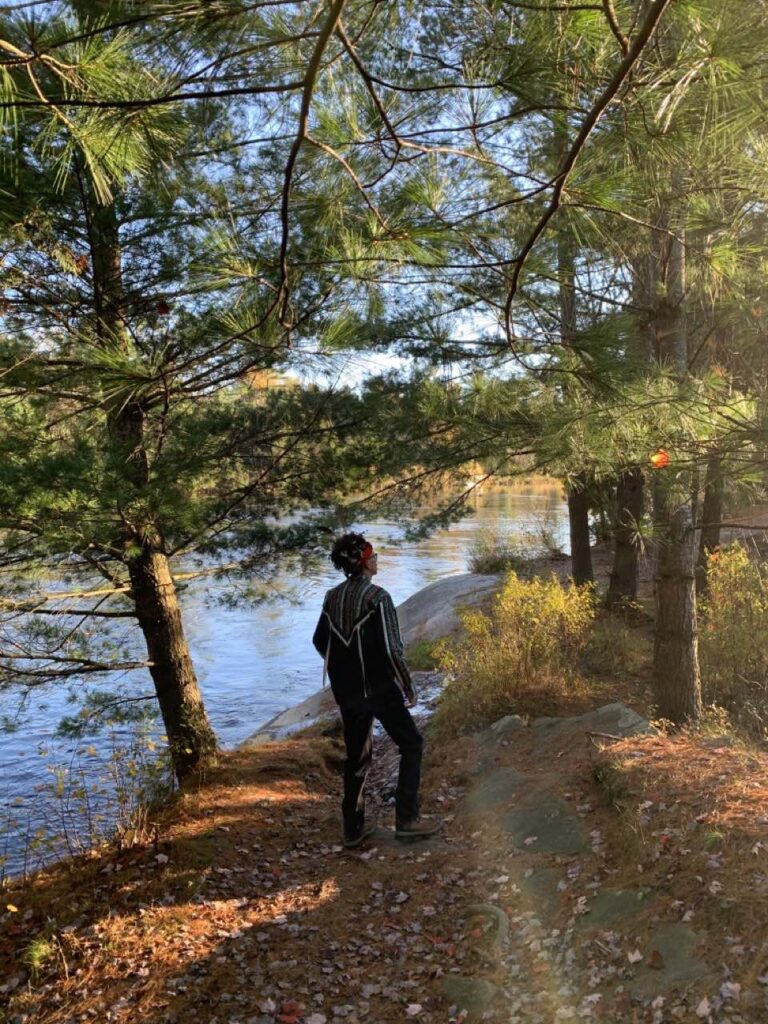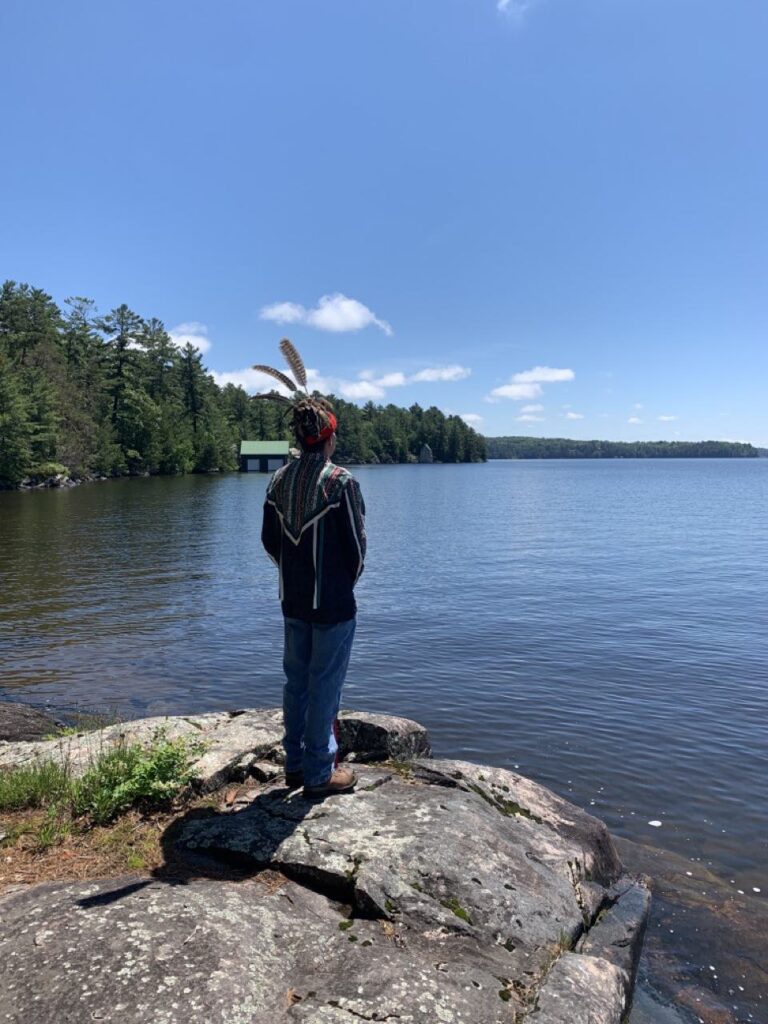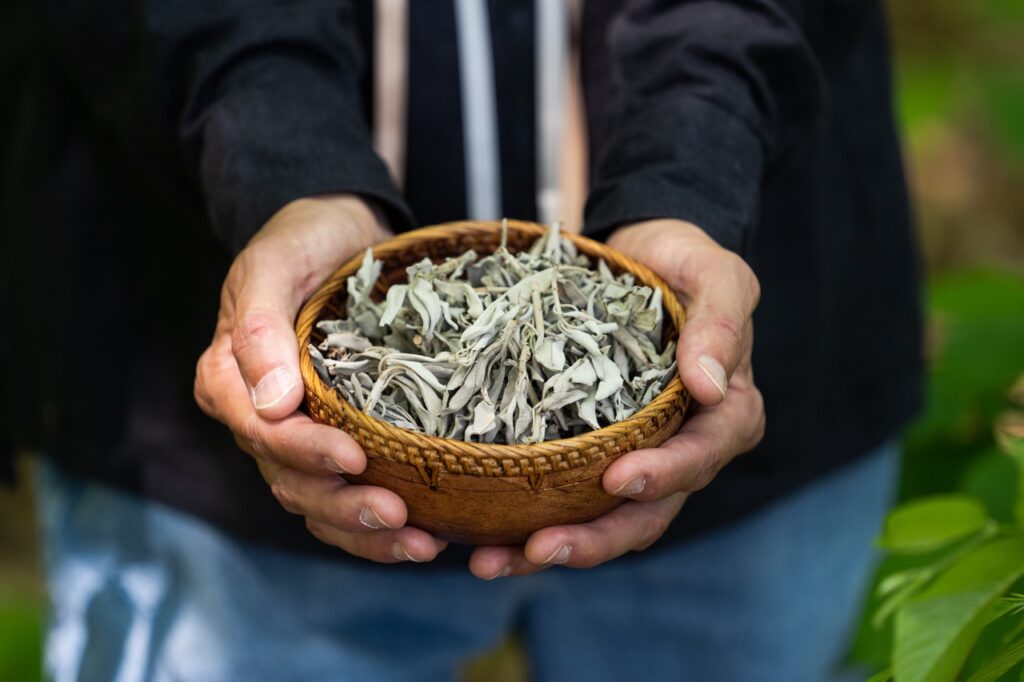by Christopher Stock
Muskoka is a magical and beautiful place. You can sense it as soon as you cross over the Severn River. With its enormous rock cuts and faces, the expanse of waterways, and mixed forests, the area teems with flora, fauna, and a variety of wildlife. It’s akin to holding your breath underwater for as long as you can before resurfacing to exhale and breathe in the freshness of the air. But to truly understand Muskoka, we need to delve deeper into this geographical region.
This region was once completely covered by a thick ice sheet glacier. With its movements of shrinkage and growth, freeze and thaw, the scars of all this action can still be found in the landscape today. Ice has made deep cuts into the Canadian Shield, while water, especially running water, has smoothed and polished rocks. Wherever you travel in this region, reminders of how the landscape was crafted are evident.
Ice shaping Muskoka
Some 15,000 years ago, its first inhabitants would have witnessed the first signs of climate change. The landscape transformed from a barren ice sheet to multiple veins of meltwater. The melting ice allowed the Canadian Shield to upheave from the immense pressure of the ice’s weight, creating large mountainous and cavernous terrain. This transformation introduced new animals, plants, insects, diseases, and large bodies of water, facilitating more movement of life.

The Muskoka Discovery Centre (MDC) in Gravenhurst, following its $9 million expansion, is currently narrating the story of Muskoka with several new exhibits.
“The Muskoka Story: A Microcosm of Canada”, focuses on shared history and the importance of water to all living things. Three interrelated exhibits allow for a deeper dive into the Greater Story of Muskoka. Thought, discussion, and a better understanding among all peoples is encouraged.
Muskoka Cultural Heritage
“Misko-Aki: Confluence of Cultures (Red Earth)” explores the existence of Indigenous Peoples and their cultures in Muskoka from time immemorial to the present day. It was created and curated by a circle of Indigenous Elders, Knowledge Keepers, Scholars, and Linguists. Together, they represent Huron-Wendat, Anishinaabek, Haudenosaunee, and Métis communities.

“Evolving Muskoka: Life on the Edge of the Shield” tells the story of the last 250 years, beginning with the first settlers. It covers their challenges, conflicts, technologies, strife, and triumphs, reflecting on the rapidly changing landscapes over 250 years. It allows for a better understanding of past development practices. Furthermore, it encourages creative and innovative thinking to address the present challenges we face. Future development, protection, and preservation of Muskoka are reflected upon, as is sustainable action for future generations.
“Wanda III: Steam to Green” showcases the 108-year-old Steam Yacht. Converted from steam to electric power, it’s expected to sail the lakes of Muskoka in the summer of 2024. The original steam engine has been carefully refurbished as a working display, providing a unique window into the importance of greater sustainability and preservation.

Creating union and harmony
Another initiative, the Muskoka Area Indigenous Leadership Table (MAILT), was formed in 2019 to strengthen relations between the seven Municipalities and eight Indigenous communities. With ongoing interests and traditional ties to lands in Muskoka, they honor the Truth and Reconciliation Commissioner’s Calls to Action. The MAILT is leading the way by providing an opportunity for Indigenous and Municipal leaders to come together. It strengthens relationships, joins aspirations, and celebrates successes. This effort is paving the way forward to advance Truth and Reconciliation, in favor of Muskoka cultural heritage.

All initiatives honor of the “One Dish with One Spoon Wampum Treaty”. They advocate for Muskoka cultural heritage: coexistence in peace, love, harmony, balance, honor, and respect. The idea is that we can coexist side by side, no longer fighting over territory or natural resources. This treaty emphasizes respecting each other’s differences and sharing what the land, air, and water provide equally and inclusively. It emphasizes never taking more than needed, similar to the “Two Row Wampum Treaty,” agreed upon by the Haudenosaunee and Europeans. Muskoka holds great significance to the original peoples. The Muskoka River served as a resting ground, meeting place, and location for summer and fall harvesting camps, trade, and business activities. It was a place to forge alliances, build relationships, and settle agreements in peaceful and respect. This area has always been mystical, magical, and powerful.
From the original eight to the present day
The area has been shaped by various groups. From the eight Indigenous communities to the first inhabitants to the homesteaders who came to carve out an existence. This includes hunting and sports camps, towns, and villages from the late 1800s to 1900s. Even the cottagers and tourism industry from the 1800s to the present day. Finally, the Muskoka Airport, which continues to play a significant role. The health benefits and quality of life bring people from all over the world to come to visit and stay here.
To enhance the ongoing positive collaboration between MAILT and the Muskoka Discovery Centre, we are embracing innovative strategies to pave the way for future generations. The inaugural “See Muskoka Through Our Eyes” Traditional Pow Wow, set for June 29 and 30, 2024, symbolizes a unifying celebration for Muskokans and visitors alike. We honor Muskoka cultural heritage. This event marks the culmination of Indigenous Awareness Month, the Summer Solstice, and Canada Day. It fosters an atmosphere of peace, unity, and harmony. It serves as a platform for honoring the principles of the “One Dish with One Spoon Treaty” and reflects the essence of The Truth and Reconciliation Commission’s Report of 2015, which includes ninety-four calls to action, urging Canada and Canadians to transition from verbal commitments to concrete actions.

Reconciliation is a Journey: Muskoka cultural heritage
The pathway toward Truth and Reconciliation involves compassion, love, honor, respect, thanks, and gratitude. Our grandparents and great-grandparents fought alongside one another during many wars, social and literal, and many sacrificed, survived, and thrived in order for us to be standing right here, right now, in this important moment of time for our country, Kanata—Canada.
Reconciliation is a Journey, a process that requires patience, dedication, and time. It is not a destination. It’s more of a level of understanding and recognizing that it will take serious effort, dedication, and commitment by all parties involved, and it will take time to reach that level. Without truth, there can never be reconciliation. We are in the process of starting that journey together towards Truth and Reconciliation. This requires peace, unity, and harmony, always striving for balance between our differences. This event allows for Indigenous and Non-Indigenous communities to interact and learn about each other in a positive way.



